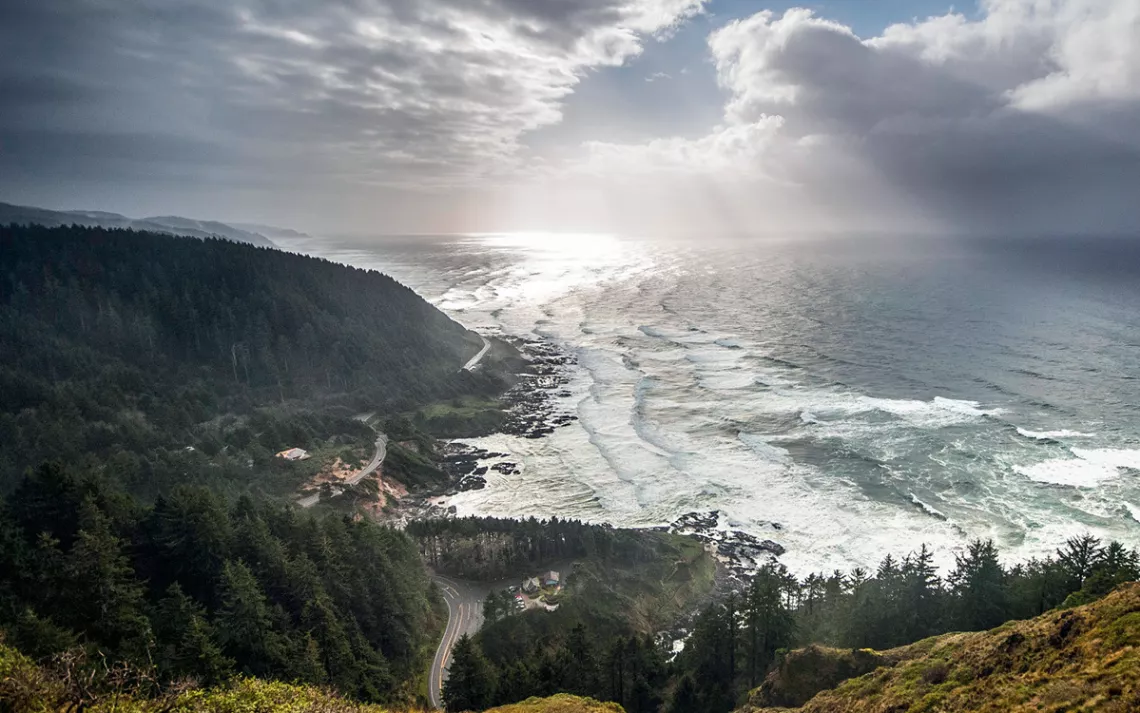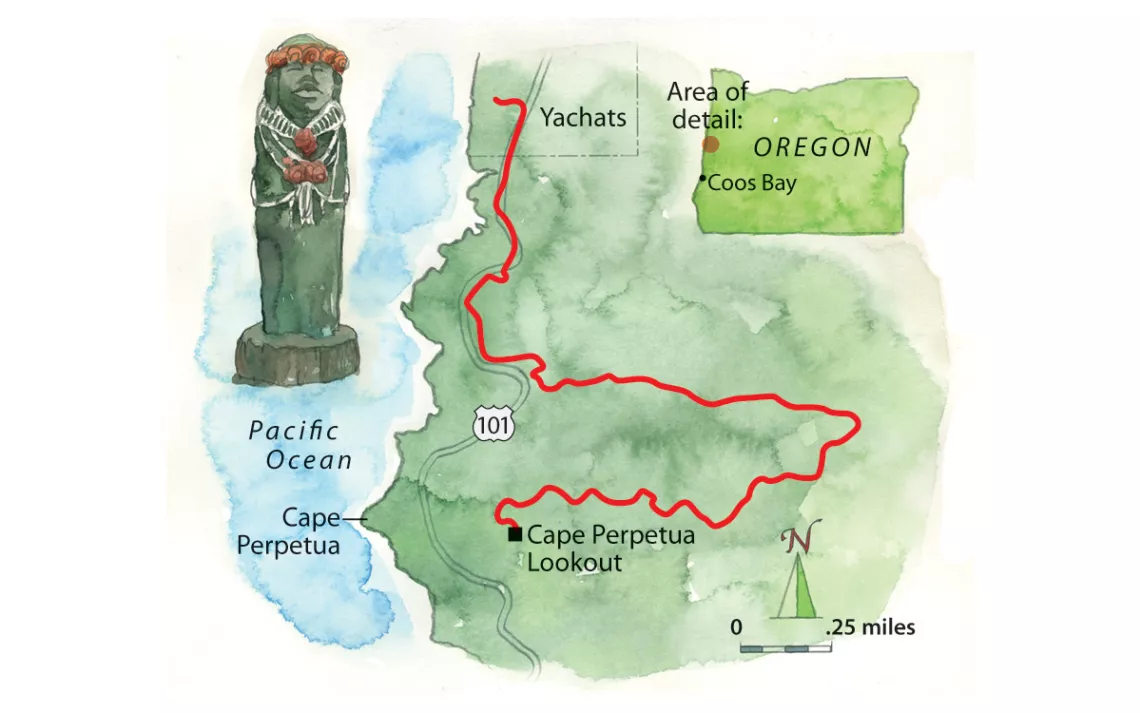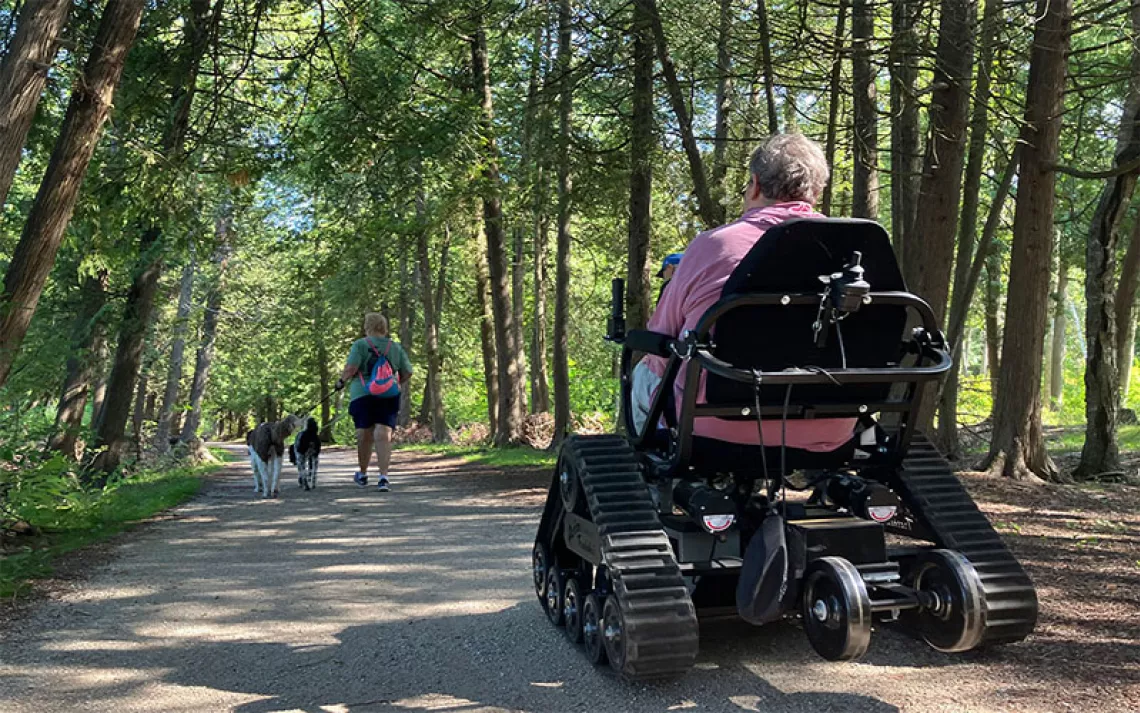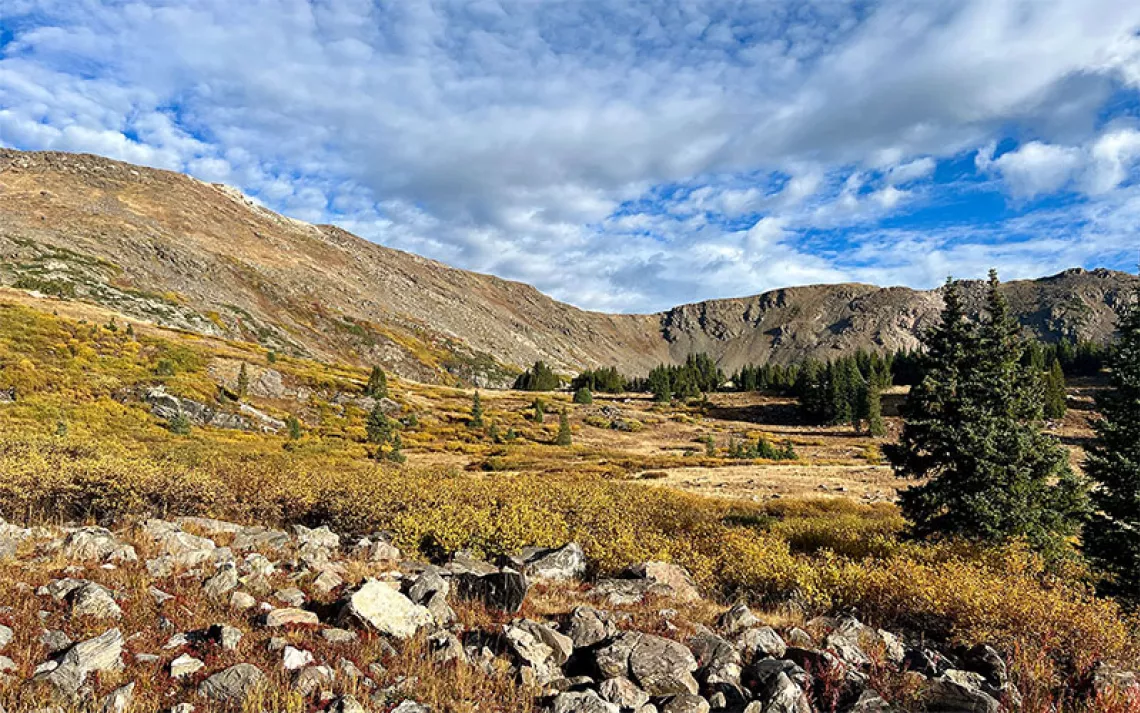Oregon's Trail of Tears
A hiker explores the Oregon coast and its dark history

Amanda's Trail sheds light on a dark period in Oregon's history. | Photo by Tyson Gillard/ Outdoor Project
A veil of fog is suspended over the Pacific Ocean when I pull into the parking lot of Yachats State Recreation Area. An elderly couple is sitting on a bench, staring at the wall of gray as if it will soon part like a theater curtain.
I've driven 150 miles from Portland, through the snow-dusted coastal mountain pass, to hike a portion of the Oregon Coast Trail. It stretches 382 miles, nearly all the way from California to Washington, but today I'm walking a short section known as Amanda's Trail.
Despite a persistent, year-round chill—relentless in the winter and sneaky in the summer—the Oregon coast attracts throngs of visitors to explore its rocky beaches and staggering cliffs. Thanks to the 1967 Oregon Beach Bill, which established the coastline as public property from surf to vegetation, people are free to picnic and tease the icy Pacific with their toes wherever they choose. The foresight to protect the coast from private development is a point of pride for Oregonians, and this year they celebrate the 50th anniversary of that landmark legislation.
As I begin to hike Amanda's Trail, though, I am thinking about the paradox of celebrating public access on stolen land.
Amanda De-Cuys was a blind Native American woman of the Coos tribe. She traversed this section of coastal trail 153 years ago, but not by choice.
After the Coast Reservation was established in 1855, coastal tribes were rounded up and forced to relocate to the rugged land, which was of no use to white settlers. The tribes had signed a treaty that they thought would allow them to live in peace, despite being forced out of their homes. But Congress did not ratify the treaty, and critical funds never made their way to the people who lived on the reservation, leading to rampant disease and starvation.
Like others, De-Cuys fled the unbearable conditions, making her way to Coos Bay, where she met a settler with whom she had a child. When the U.S. military arrived years later—charged with finding runaways and returning them to the Coast Reservation—De-Cuys was forced to abandon her daughter and walk, along with dozens of members of the Coos and Lower Umpqua tribes, 75 miles north from Coos Bay to what is now the town of Yachats.
De-Cuys's journey, and what little we know about her, was recorded in the diary of Corporal Royal Bensell, who wrote that on the final day of walking, De-Cuys's bare feet dragged along the sharp, volcanic rock of Cape Perpetua, leaving "blood sufficient to track her by."
The trail I am hiking today is the last leg of that route, starting where Amanda's journey ended. After walking through the main drag of Yachats—with its colorful shop doors that have yet to yawn open—I follow Highway 101 briefly, then cross it at Windy Way Street. I climb into the forest, where the towering closeness of Sitka spruce trees muffles the hum of nearby traffic.
About a mile in, I come upon a clearing with benches surrounding a carved stone statue of De-Cuys. It is decorated with beads, feathers, and small stones, placed there by those who've come to pay their respects.
In 1998, over 120 people gathered at Amanda's Grotto for the official opening of the trail. The statue and the trail were the culmination of more than 25 years of efforts by members of the Confederated Tribes of Coos, Lower Umpqua, and Siuslaw Indians and other community volunteers to shed light on this region's dark history.

Map by Steve Stankiewicz
A sign at the grotto contains information about De-Cuys and the coastal tribes and encourages all who walk this path to acknowledge the atrocities of the past.
"It is through the recognition of these events that the new communities and the original peoples are coming together to restore native ways in the modern world," it reads.
I sit on a bench and close my eyes. Hiking is something I usually do to escape the monotony of staring at a computer for work, but today is not about escape. It's about confronting uncomfortable truths that we so often ignore when exploring the natural beauty of the United States.
After a few minutes, I resume my hike. Beyond Amanda's Grotto, the trail is steep as it ascends toward Cape Perpetua. The path is easy to follow, with its blue Oregon Coast Trail markers.
Despite the occasional tease of water peeking between thinner sections of forest, the Pacific Ocean feels distant for most of this hike, like a mythical sea creature just beyond reach.
When the trail forks, I follow it right for the Cape Perpetua Lookout, where the deep green of the moss-cloaked trees disappears and sparkling blue takes the stage. It's a jarring realization—this great expanse of water has been here all along.
After a brief rest, I turn back the way I came. It's time to go home. Such a simple thing, denied to so many.
WHERE Amanda's Trail, from Yachats to Cape Perpetua in Oregon
GETTING THERE Start at the Yachats State Recreation Area parking lot. This is an out-and-back route: 3.8 miles one way, 7.6 miles total (Editor's note: Amanda's Trail can be accessed from multiple points of entry to the Oregon Coast Trail).
WHEN TO VISIT The Oregon coast is beautiful year-round, but visiting during the summer months will greatly reduce the chance of rain.
WHAT TO WEAR Dress in layers. Temperatures on the Oregon coast fluctuate quickly, and a rain shower can leave you wet and cold.
PERMITS None required.
PRO TIP Begin your hike early in the morning so that you have time to meditate and show your respect for local tribes at Amanda's Grotto without the distraction of other hikers.
MUST-SEE The Cape Perpetua Lookout offers one of the best views of the Pacific Ocean from Oregon. This is the midpoint of your hike. Bring a snack and enjoy it on the benches with an expansive view of the coastline (even if fog obscures the ocean, it's still beautiful).
UNEXPECTED FUN If, after the solemnity of hiking Amanda's Trail, you're ready for some lighthearted indulgence, try the ice cream at Toppers in Yachats. The smell of homemade fudge emanating from the shop is irresistible.
 The Magazine of The Sierra Club
The Magazine of The Sierra Club






